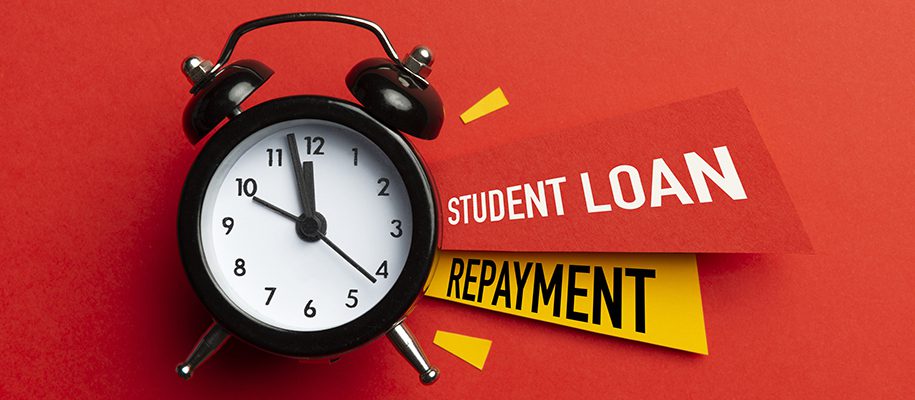1. Introduction
Repaying student loans can feel overwhelming, but with the right knowledge and planning, you can effectively manage your debt and pave the way to financial freedom. This guide provides an overview of student loan repayment options to help you make informed decisions.
2. Understand Your Student Loans

Start by understanding the details of your student loans. Determine the types of loans you have (federal or private), the interest rates, and the repayment terms. Knowing the specifics will guide you in choosing the most suitable repayment option.
3. Explore Repayment Plans
Federal student loans offer various repayment plans to accommodate different financial situations. Take the time to understand each plan and its requirements. Some plans provide fixed payments, while others consider your income and family size.
4. Standard Repayment Plan
The standard repayment plan divides your loan into equal monthly payments over a fixed period, usually ten years. This plan ensures your loans are paid off in a shorter time frame but requires higher monthly payments.
5. Graduated Repayment Plan
The graduated repayment plan starts with lower monthly payments that increase over time, typically every two years. This plan is suitable if your income is expected to rise steadily in the coming years.
6. Income-Driven Repayment Plans
Income-driven repayment plans calculate your monthly payments based on a percentage of your discretionary income. These plans include options like Income-Based Repayment (IBR), Pay As You Earn (PAYE), and Revised Pay As You Earn (REPAYE). They can provide more manageable payments based on your income level.
7. Public Service Loan Forgiveness (PSLF)
The PSLF program offers loan forgiveness after making 120 qualifying payments while working full-time for a qualifying employer, such as a government or nonprofit organization. It’s crucial to meet all the program’s requirements to benefit from loan forgiveness.
8. Loan Consolidation
Loan consolidation combines multiple federal student loans into one new loan, simplifying repayment. Consolidation can extend your repayment term, potentially lowering monthly payments but increasing the total interest paid over time.
9. Refinancing Options
Private loan refinancing allows you to replace your existing loans with a new loan from a private lender. Refinancing can help you secure a lower interest rate or change your repayment terms. However, refinancing federal loans into private loans may result in the loss of federal loan benefits.
10. Considerations for Choosing a Repayment Option
Consider factors such as your income, career path, future financial goals, and family size when selecting a repayment plan. Assess how each option aligns with your financial situation and choose the one that offers the most manageable payments while meeting your long-term objectives.
11. Communication with Loan Servicer
Maintain open communication with your loan servicer. Inform them about any changes in your circumstances, such as income fluctuations or address updates. They can provide guidance, answer your questions, and help ensure a smooth repayment process.
12. Budgeting and Financial Management
Create a budget to manage your expenses and allocate a portion of your income towards loan repayment. Prioritize your loan payments and cut back on non-essential expenses to free up more money for debt repayment. Consider using budgeting apps or spreadsheets to track your progress.
13. Seek Assistance from Student Loan Counselors
If you’re struggling with loan repayment or need personalized guidance, consider reaching out to student loan counselors or financial advisors. They can provide expert advice tailored to your situation, helping you navigate through the complexities of loan repayment.
14. Avoid Default and Late Payments
Make your loan payments on time to avoid default, which can have severe consequences on your credit score and financial future. If you’re facing financial hardship, explore deferment or forbearance options, but use them sparingly to avoid increasing your overall debt.
15. Conclusion
Repaying student loans may seem daunting, but with the right strategies and knowledge, you can successfully manage your debt and achieve financial freedom. Evaluate your options, communicate with your loan servicer, and stay committed to your repayment plan.
16. FAQs
Q: Can I change my repayment plan after selecting one?
A: Yes, federal loan borrowers can switch repayment plans if their circumstances change. Contact your loan servicer to discuss available options and eligibility criteria.
Q: Can I pay off my loans faster than the standard repayment plan?
A: Yes, you can make additional payments towards your loans to pay them off faster. Ensure that any extra payments are applied to the principal balance and not future interest.
Q: Are there forgiveness programs for private student loans?
A: Private student loans generally do not offer forgiveness programs. However, refinancing private loans into a new loan with better terms may be an option to consider.
By understanding your options, communicating effectively, and managing your finances wisely, you can navigate the student loan repayment journey with confidence. Take control of your financial future and work towards a debt-free life.




